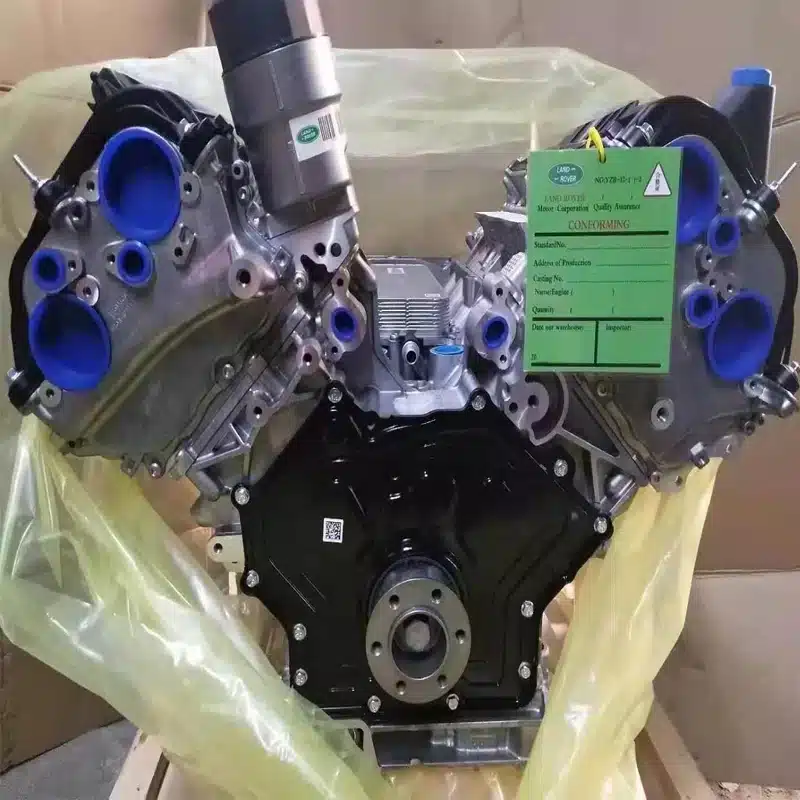S/he replaced the engine of his/her Land Rover, but the official workshop requires him/her to repeat the process: ‘It is a cost of 18,000 euros!’

The world of automotive is full of unexpected and sometimes discouraging challenges for vehicle owners. What should have been a definitive solution, changing the engine of a Land Rover, turned into a financial nightmare when the official workshop requested a second engine replacement, raising the total cost to the astounding figure of 18,000 euros. This situation highlights questionable practices and the apparent lack of transparency in the maintenance services of this British manufacturer.
A Land Rover Discovery 5 owner finds himself in an unusual situation after having replaced the engine of his vehicle. Despite the change, the official workshop has informed him of a new mechanical failure that requires another engine replacement, this time accompanied by a budget of 18,000 euros. The case has generated controversy regarding the transparency and trust of certain official maintenance services.
The Odyssey of Owning a Land Rover
Buying a Land Rover should be a dream come true for any off-road car enthusiast. However, for some owners, the experience turns into a constant nightmare due to recurring mechanical failures. This particular case of a Land Rover Discovery 5, hardly three years in the hands of its owner but purchased second-hand with 76,000 kilometers, is a clear example of this.
Throughout its usage period, the vehicle had passed all maintenance inspections at official workshops, which in theory should ensure an impeccable service history. However, at 65,000 kilometers, the discovery of an engine fault led to the first complete replacement.
The Dilemma of the Replaced Engine
Replacing a defective engine is usually an expected solution; however, for this owner, it resulted in a cycle of problems. Shortly after the first replacement, the new engine began to present failures that, despite being partially covered by the warranty, incurred additional costs, such as a repair of 1,700 euros.
The vehicle did not take long to be out of service again, and the owner was informed that the engine and the turbo, recently replaced components, needed to be changed again. This time, the estimated bill was nothing less than 18,000 euros. An exorbitant figure for a repair that should have been definitive at the first attempt.
Alternatives Against the Workshop’s Proposal
Faced with the overwhelming prospect of incurring such a significant expense, the owner began to consider his options. Surprisingly, the same official workshop suggested a quick sale of the vehicle after the repair, advice that, while unusual, reflected acknowledgment of the model’s low reliability.
Determined not to follow the official service recommendations, the owner chose to seek help at a different trusted workshop. This decision allowed the discovery that the root problem was the breakage of the timing chain, a common failure among vehicles of this brand that typically justifies complete engine changes in the initial diagnoses.
The Search for Justice and Compensation
Dissatisfied with the lack of permanent solutions and the exorbitant costs, the owner decided to explore legal avenues. Filing a lawsuit against the manufacturing company was considered a possibility, trying to recover part of the costs invested in what seemed to be an endemic manufacturing problem.
This case highlights the importance of carefully evaluating repair budgets and opting for second opinions before accepting high-cost diagnoses at official workshops. For those facing similar problems, there are notable strategies that help mitigate these costs, as this article about the interior of engines indicates.
A Call for Transparency in the Sector
The case of the Land Rover Discovery 5 is not isolated, as also seen in owner forums and online groups such as CHASIS CERO. The high maintenance costs and poor reliability in specific models force users to be more cautious regarding their choice of vehicles and the maintenance services they hire.
This type of experience fosters debate about the need for greater transparency in the official repair sector, where customers should be able to expect an honest and quality service. For those interested in reducing their dependence on costly services, exploring the transition to more sustainable options such as hybrid engines could be a viable alternative, as explained in this article on the transformation of diesel engines to hybrids.
An Expensive Automotive Déjà Vu
The recent story of a Land Rover owner highlights the challenges and dilemmas faced by luxury vehicle users when maintenance and repair costs become exorbitant. In an incident that has revived the discussion on transparency in after-sales services, the owner of a 2017 Land Rover Discovery 5 is confronted with an astounding situation: after having previously paid for a major engine change, he is forced to repeat the process at an astonishing cost of 18,000 euros.
The problems began when the Discovery reached 65,000 kilometers and required its first engine change, despite all inspections having been carried out at the official workshop. However, far from definitively solving the problem, the new engine also showed failures, exhausting the owner’s patience and resources.
The conflict intensified when, after a frustrating trip that ended with the vehicle broken down again, the official workshop presented a diagnosis involving another complete engine change, accompanying this proposal with a monumental budget. This recommendation, which coincides with the experiences of other customers suggesting “getting rid of the vehicle,” has exacerbated the affected owner’s frustration, who is considering legal avenues for a fair response.
This case underscores the pattern of deficiencies in reliability and costly repairs that Land Rover owners have faced. Moreover, it raises questions about the responsibility of the manufacturer and official distributors to ensure product quality, especially in cases where customers are forced to repeatedly bear such significant costs.
While the owner decides to repair his vehicle at a non-official workshop to cut costs, the incident remains a cautionary reminder of the challenges of owning luxury vehicles and the importance of transparency and trust in customer service.




